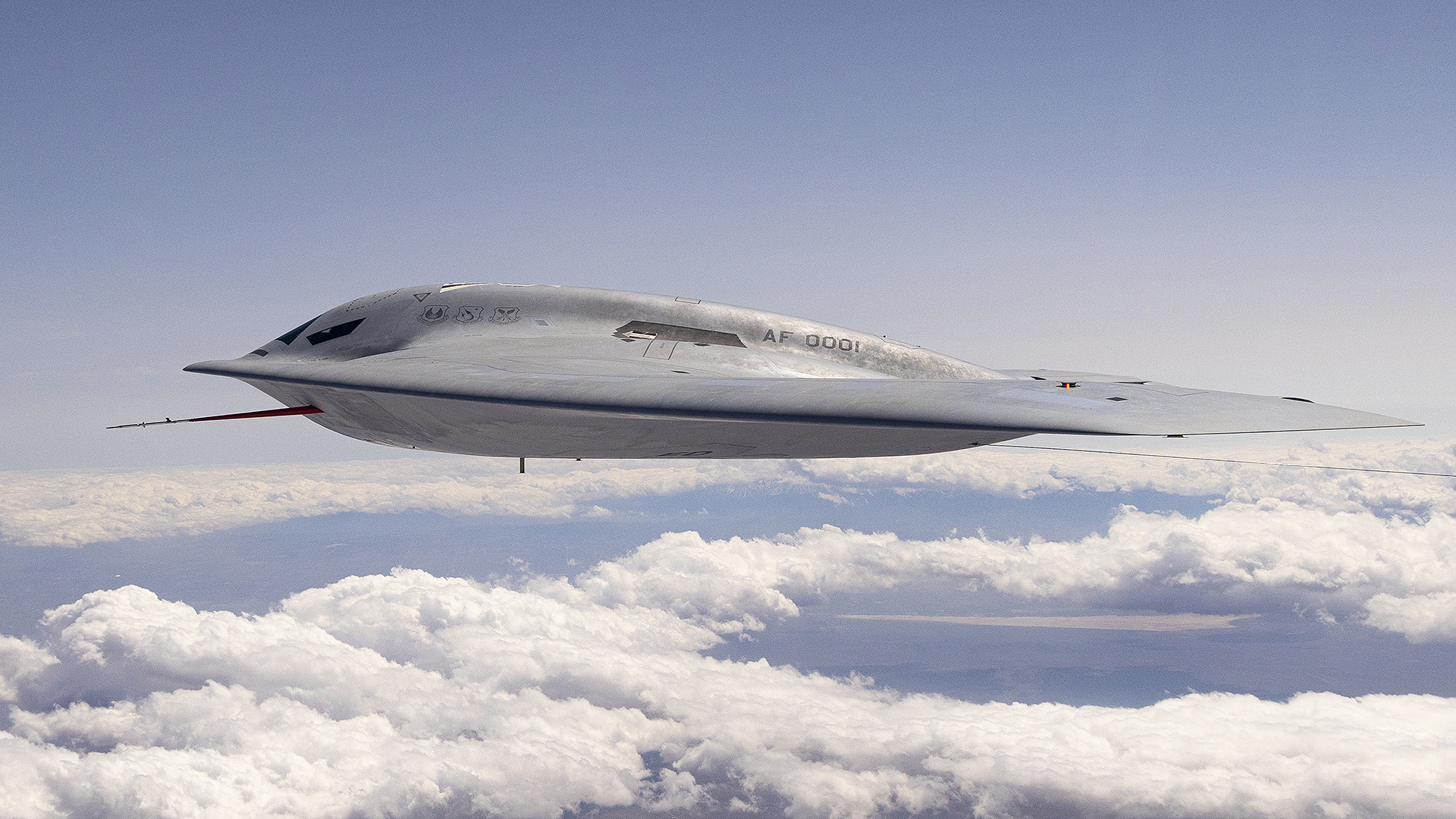The Department of Defense has published the first aerial image of its new B-21 Raider. It’s also the first official side profile shot we have seen. The photo was part of a set of three new images showing the Raider flight testing at Edwards Air Force Base.
The air-to-air image showcases the deep shelf-like extension that makes up the jet’s leading edge, which is most pronounced along its nose. This is a key very low-observable feature of the aircraft that is far more pronounced than the beak-like nose and chine-line that is seen on its predecessor, the B-2.
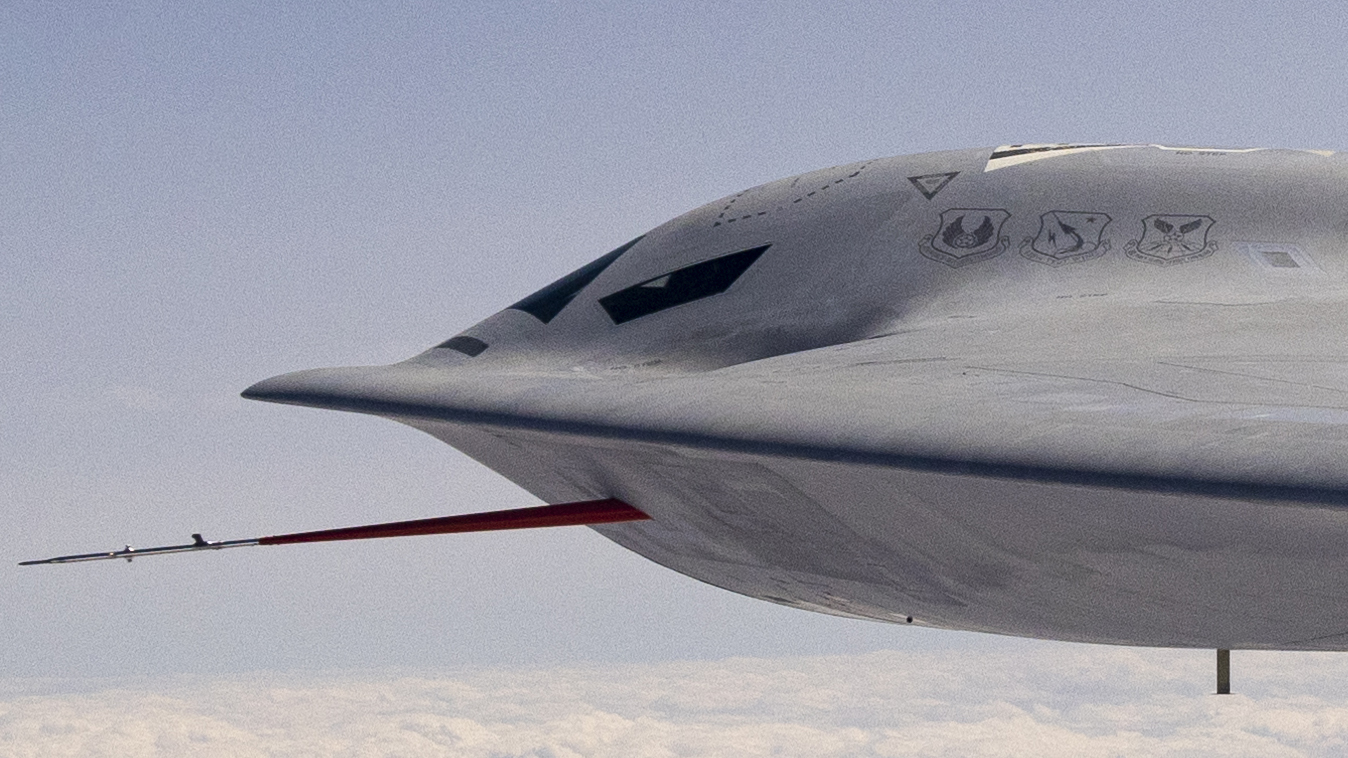
We also see the jet’s now famous cockpit side window design more clearly, with its small trapezoidal viewports specifically tailored for signature control. Its forward windscreen that has a somewhat limited field of view, with it seemingly being optimized for aerial refueling, is also shown. Ejection seat apertures above its cockpit area, as well as its refueling receptacle port are prominent in the photo. The aircraft adopts similar refueling symbology on its dorsal skin as what’s found on the F-22 and F-35.
Below that we see the crests of the commands related to its existence, which is a common feature on the B-2. Another small rhombus-like aperture is seen along the mid-upper fuselage area, which could be part of its highly secure directional data-link system, similar to what’s found on the F-35. An antenna is seen below its fuselage that would retract for stealth operations and the aircraft’s temporary air-data probe extending at an angle from its lower forward fuselage looks even stranger in the air than it does on the ground.
To the rear, we see its AF 0001 serial number, as well as an interesting look at its light-colored skin coating. Prior to rollout, we posited the B-21 would adopt a lighter tone as it would be optimized to operate both during the day and at night. We see additional diamond-like apertures, as well as a large panel that has serrated forward edges located between the engine nacelle ‘humps’ and the center domed fuselage section. What is most apparent here is just how incredibly well blended the B-21’s intakes are with its flying-wing design. They are nearly unrecognizable in this side-on image, reflecting perhaps its most intriguing very low-observable feature.
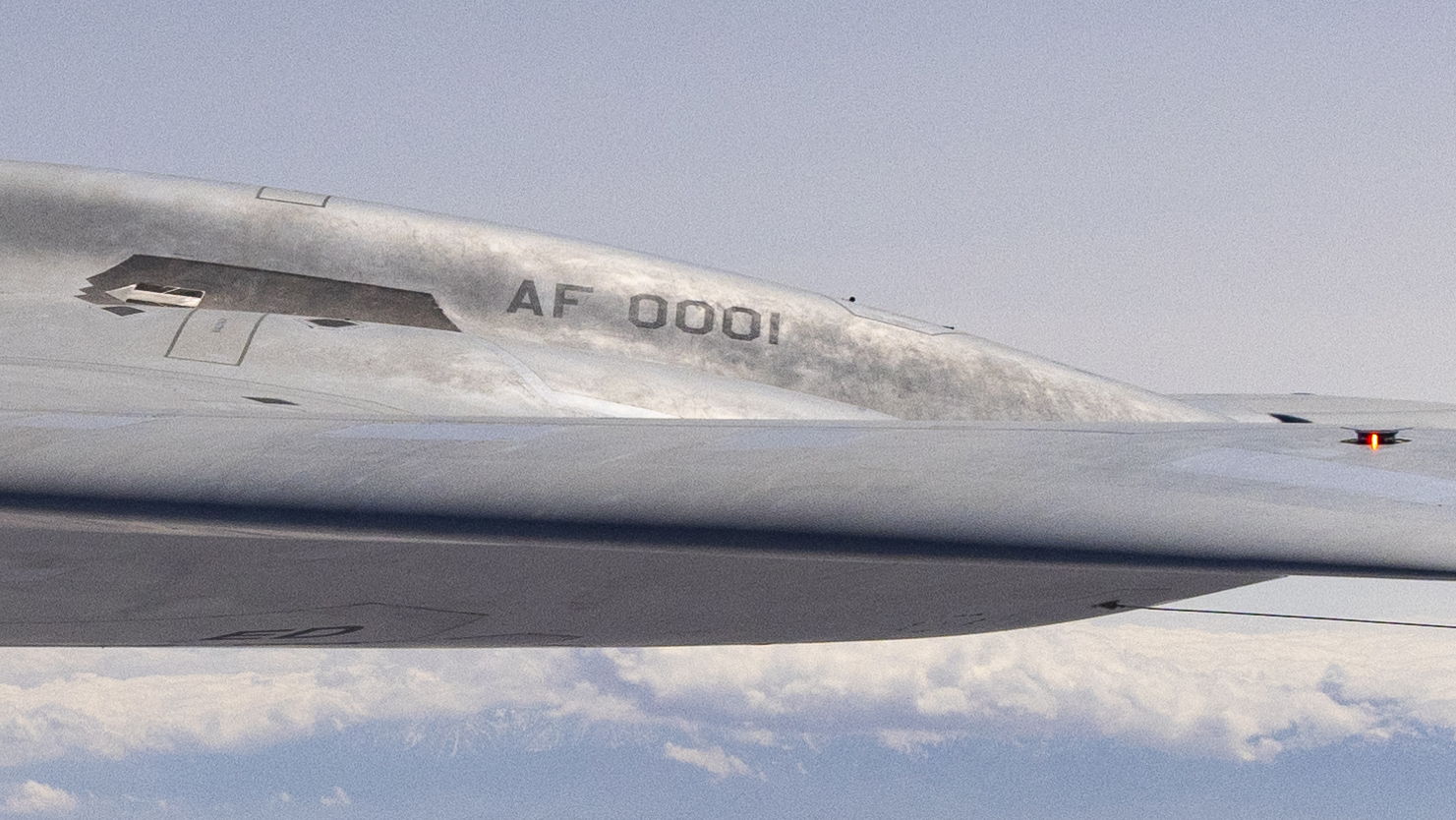
Finally, we see extended formation lights that would sit flush with the B-21’s skin for combat operations and the attachment point for the temporary trailing flight test cone’s wire that is emanating from the jet’s lower rear half. The B-21’s exhausts, which are historically a very sensitive low-observable feature, are totally unseen in this image.
Overall, this side-on image gives us an idea of just how smooth and flowing the B-21 design truly is. While having much in common with its predecessor the B-2, it is clearly a major leap in stealth technology. You can read more about this unique relationship in this past special feature of ours.
The image of the B-21 taking off from Edwards gives us our first official lower-angle view of the B-21 so far. Here we see its single-axle landing gear that features two wheels instead of the B-2’s four. This is a key element that underlines the Raider’s lower gross weight and smaller overall size than its predecessor. But what’s most notable is that this is the first official image that shows the aircraft’s auxiliary intake doors open.
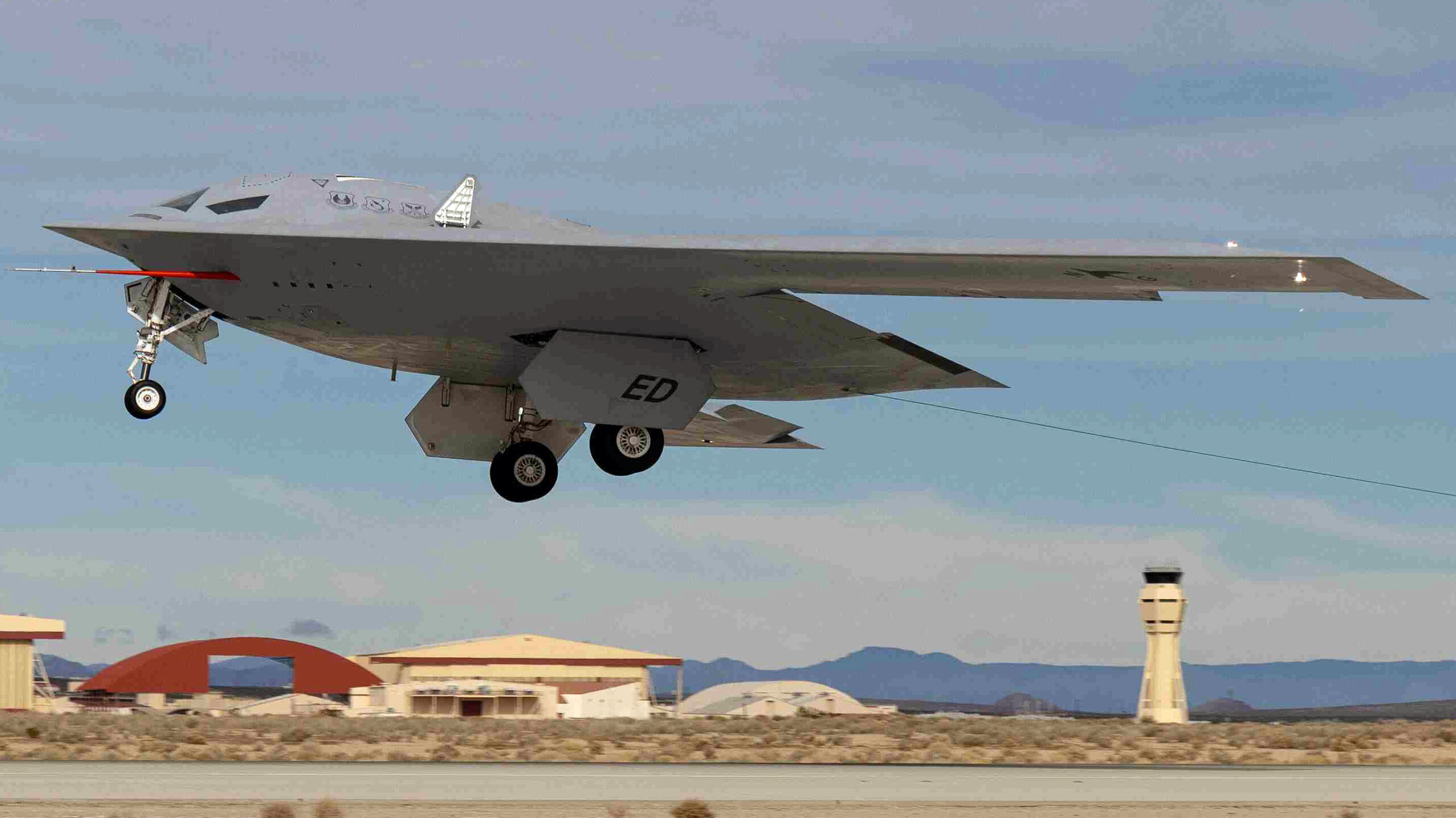
These swing-up doors allow for the jet’s engines — still unclear as far as their type and number — to suck up more air during terminal operations where high power settings, steeper angles of attack, and slower speeds are the norm. The B-21’s deeply-buried inlets clearly have limitations in this regime of flight and even the B-2 had its own auxiliary intake doors, although they are a leaf-like design that opens atop the nacelles, unlike this delta-shaped swing-out design. Once again, the B-21’s intakes aren’t even seen here. We also get another shot of the Raider’s strange windscreen, with its limited field of view being even more evident here.
This image is highly reminiscent of the concept art seen below that was released before the B-21 was officially unveiled.
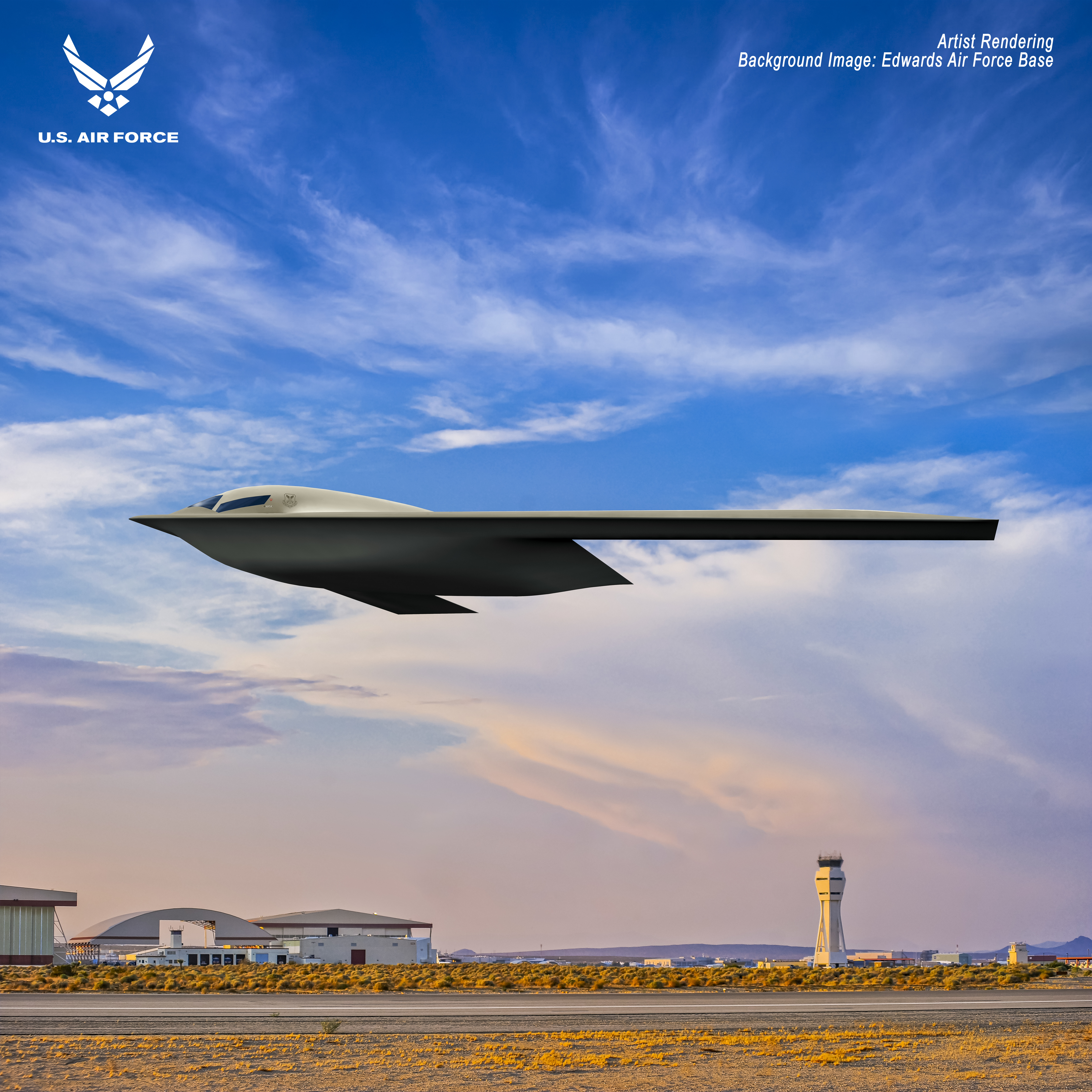
Finally, we have a new head-on image. While there isn’t much revelatory to see from this now familiar angle, we do get an idea of how B-21s will look in their purpose-built shelters that will sprout up at their future bases. We still do not know the dimensions of the B-21, but based on this image, it fits inside the open-air shelter with plenty of room to spare. In the past, we have posited it was as large as 155 feet in terms of wingspan, although the alien attributes of the aircraft make judging its exact size challenging. It’s also worth noting that an entire test center was built from an existing facility for the B-21 at Edwards.

A press release that came with these new images highlights a recent quote in regards to the jet’s developmental progress:
On May 8, 2024, during testimony at the Senate Armed Services committee, Andrew Hunter, Assistant Secretary of the Air Force for Acquisition, Technology and Logistics, highlighted B-21 flight testing is on track to meet timelines and deliver to the warfighter.
“We are in the flight test program, the flight test program is proceeding well,” said Hunter in response to a question about the B-21 program. “It is doing what flight test programs are designed to do, which is helping us learn about the unique characteristics of this platform, but in a very, very effective way.”
Hunter explained this is the first aircraft that is more digital than not, which contributes to the program meeting requirements.
The goal is to deliver B-21s to the type’s first operational unit at Ellsworth Air Force Base in South Dakota in the second half of the decade, with the Raider quickly replacing the B-1B and eventually the B-2A. 100 of the jets are currently planned and it isn’t clear if that number will grow larger, although it is possible.
The fact that the USAF chose to publicize the B-21’s progress at all at this early stage in flight testing, it having took to the skies for the first time just six months ago, is a good indication as to the program’s momentum. TWZ has repeatedly inquired about its status, but details have been scant since its first flight.
While the first B-21 is said to be more production representative than pretty much any new major combat aircraft design has ever been, and the type is now in production just months after it first flew, it has a challenging road ahead of it to reach its ambitious fielding goals. But regardless of what lies ahead, at least we are getting aerial views of the world’s most complex combat aircraft actually undergoing testing.
Contact the author: Tyler@twz.com
